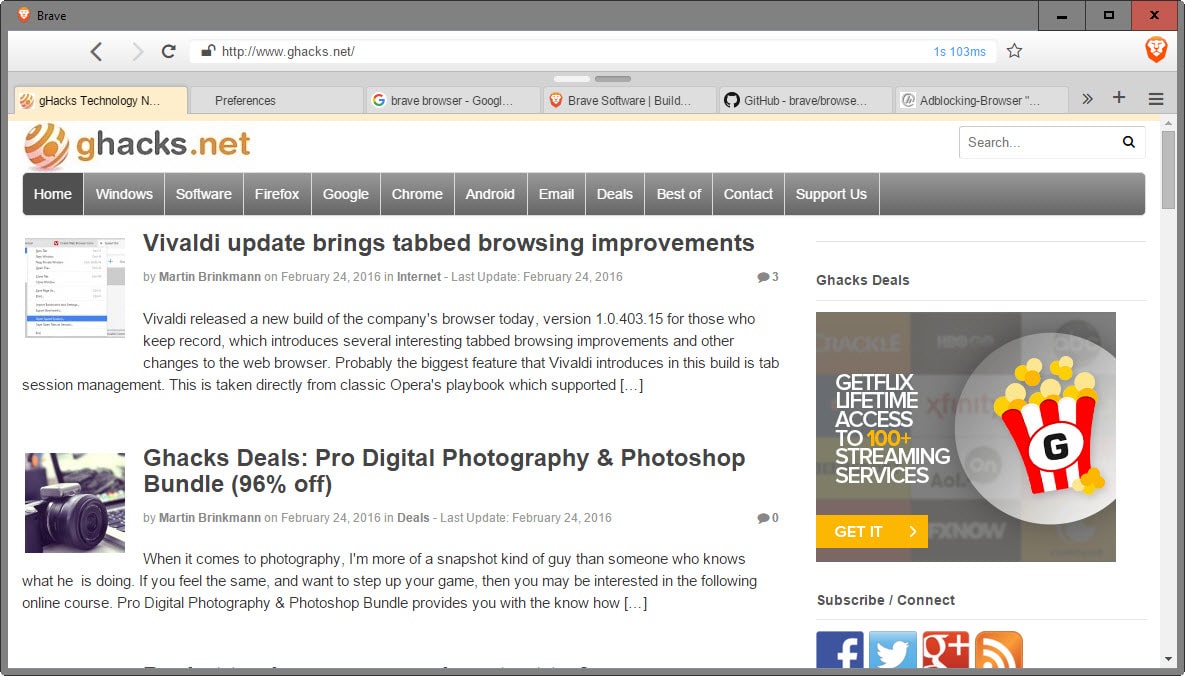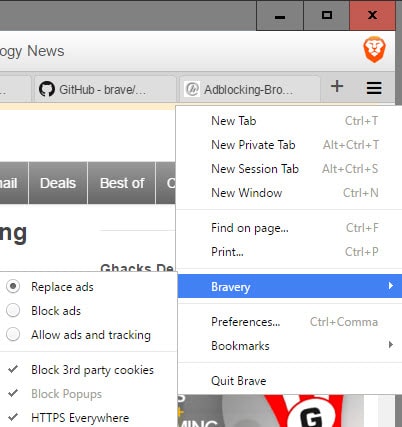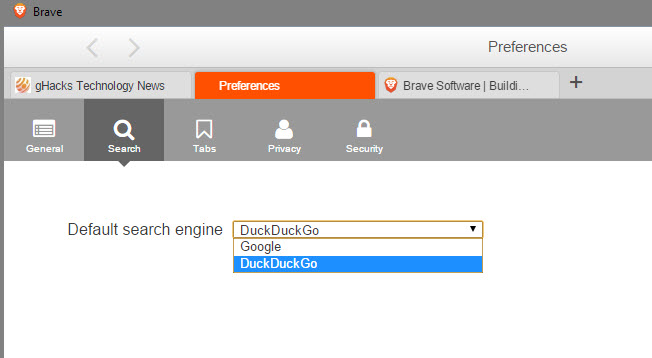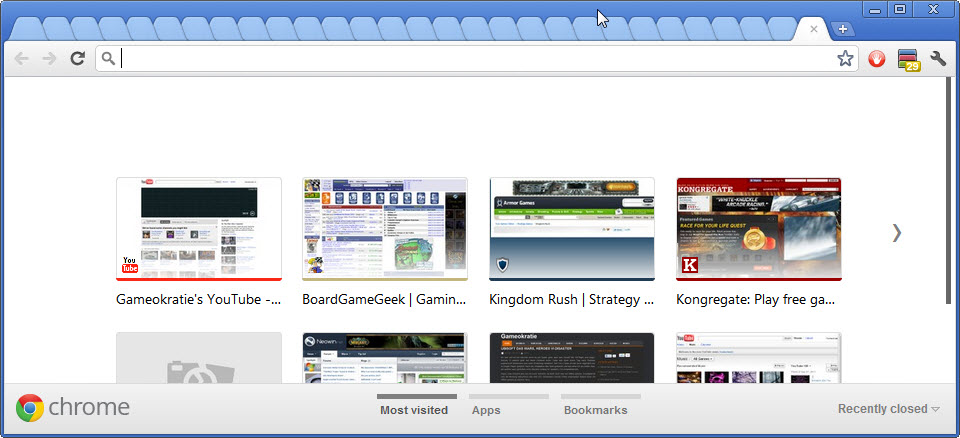First Look at Brave Browser for Windows
Brendan Eich's new web browser Brave has finally been released as a preview for the Windows desktop.
Initially released only for Apple's iOS platform, Brave is now also available for Windows, Linux, OS X and Android.
Download links for all (but the Linux) version are provided on the official Brave website, with both Windows and Mac downloads listed as developer version.
Brave promises faster, safer and better browsing thanks to integrated ad-blocking and other privacy-focused features.
Brave, under the hood, is a Chromium-based web browser which means that its performance and web compatibility is very similar to other browsers based on Chromium.
Brave Browser for Windows

A quick test revealed that it scores similar to other Chromium-based browsers in benchmarks and on HTML5 Test.
What sets Brave apart the most is its integration of privacy and ad-blocking features. Brave ships with a built-in adblocker that is turned on by default (unlike say Mozilla's Tracking Protection feature which is only available when Firefox users open a private browsing session and only after it has been enabled by the user).
Brave is highlighted as a fast browser thanks to these ad-blocking features, and the makers of the browser want to hammer the point home by displaying the page load time of the active website in the address bar.
When you load a site that displays ads, you will notice that those ads are not displayed. They are replaced on the page.
According to reports, Brave wants to replace some of the ads on the page with ads of its own in the future. These ads won't track users, and the revenue will be divided between Brave and the user with money paid out via Bitcoin.
Preferences

Brave users control the feature and related ones using the Bravery menu after clicking on the main menu icon in the top right corner.
There they find the following options:
- Replace ads (default) OR block ads OR allow ads and tracking.
- Block 3rd party cookies (enabled by default).
- Block Popups.
- HTTPS Everywhere
As far as other preferences are concerned, there are only a few available right now.

There does not seem to be an option available right now to clear the browsing history or cookies manually or automatically, let alone options to whitelist cookies, setting different search providers (other than Google or DuckDuckGo which ship with Brave), or make simple changes like changing the download directory.
Brave in action
Some things are different when you are using Brave. One that you will notice after opening more than six tabs in the browser is that it divides those tabs on pages.
You see that on the first screenshot of the article, the two bars underneath the address bar show that two tab pages are currently open in Brave.
You can modify this in the preferences but not disable it, and the maximum you can set it to is 20 tabs per page.
The idea was -- probably -- to avoid Google Chrome's tab squeezing issues. The browser does not scroll the tab bar but reduces the size of each tab open in it further and further until you cannot identify a single website anymore open in the browser.

Brave's solution improves visibility of individual tabs as they always retain the same width in the browser UI, but reduces it by separating tabs on pages which no option currently to display all open tabs directly.
The tab preview feature is different as well. You can move the mouse over any tab open in the browser to display it with transparency without switching to it.
The feature is limited to individual tab pages but can be quite useful if you want to quickly check sport scores, for updates or things like that without actually leaving the page you are on.
Closing Words
Brave is a browser in progress, and it will take a while before the first stable version of the browser gets released.
I like some of the ideas of Brave from a user perspective, and dislike others as a webmaster and publisher.
Brave's idea is to replace advertisement on websites with their own, and pay out the revenue earned to publishers, users and the company itself. This takes away control from the owners of the site as well as revenue.
While one could argue that the model is better than ad-blocking without any compensation, I cannot see it succeed as it is designed.
Now You: What's your take on Brave?